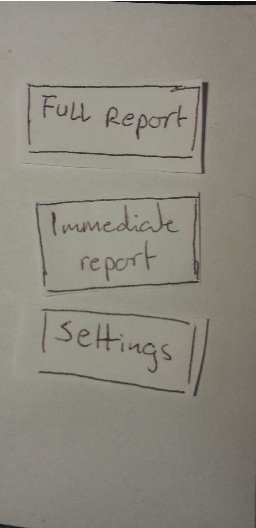Interface design
Overview
The user interface will have two primary functions, namely, inputting data and reporting crimes. Mobile phones are multi-purpose devices that are not dedicated to emergency-reporting - in fact, numerous other devices have been developed with the specific role of emergency-reporting. Despite this, mobile phones being a common possession makes them a viable target device for this purpose - particularly modern mobile phones running the Android OS which are becoming cheaper and more prevalent.
Motivation and Aim
Crime reporting is a means of informing authorities of criminal behaviour that an individual suspects or has observed. In practice individuals most often report crimes by word of mouth or in person. Studies have been performed to find out why exactly individuals may choose not to report crime. Reasons have been varied but have included fear of personal safety or social repercussions and inconvenience. Studies also found that digitising the reporting process often increases the likelihood of individuals making crime reports.
The aim of this component of the project is to develop a digital crime reporting system, based on the University Of Cape Town’s paper based system employed by their Campus Protection Services (CPS). The system must run on and utilise the features of a mobile device, improving the quality and convenience of crime reporting. A second aim is to implement an emergency crime reporting system that allows a simple gesture to send an effective crime report. The system must be simple, practical and effective for its purpose, it must allow privacy and convenience, so that it may give incentive for individuals to report the crimes they observe.
Design
In order to design the system, the key stakeholders were interviewed to find the detailed functional and non-functional requirements. These along with the existing paper based report were used as the primary design assets. Iterative participatory design principles were implemented to develop to prototypes and the final system.
Low and high fidelity prototypes were developed using Individuals living in the area of the university, who were useful in evaluating iterations of the system. The following images display various stages of the design and development.


Results
The final system was tested on participants who had to complete various scenarios using the system, with their findings recorded by observation and a participant questionnaire. The results showed that the system was highly usable however the emergency reporting aspect was not as successful being effectively usable by only half the participants. Users appreciated the ease and speediness of using the system, stating that they only wished to know how to better fill the form with regards to aspects such as suspect descriptions.
The results show however that users place value in the system and that the system achieves its task of creating an effective crime report conveniently and privately. Future work could be done to expand the kinds of reports the system could create, such as crime tip offs, medical and fire emergency reports.
Interface Screenshots



